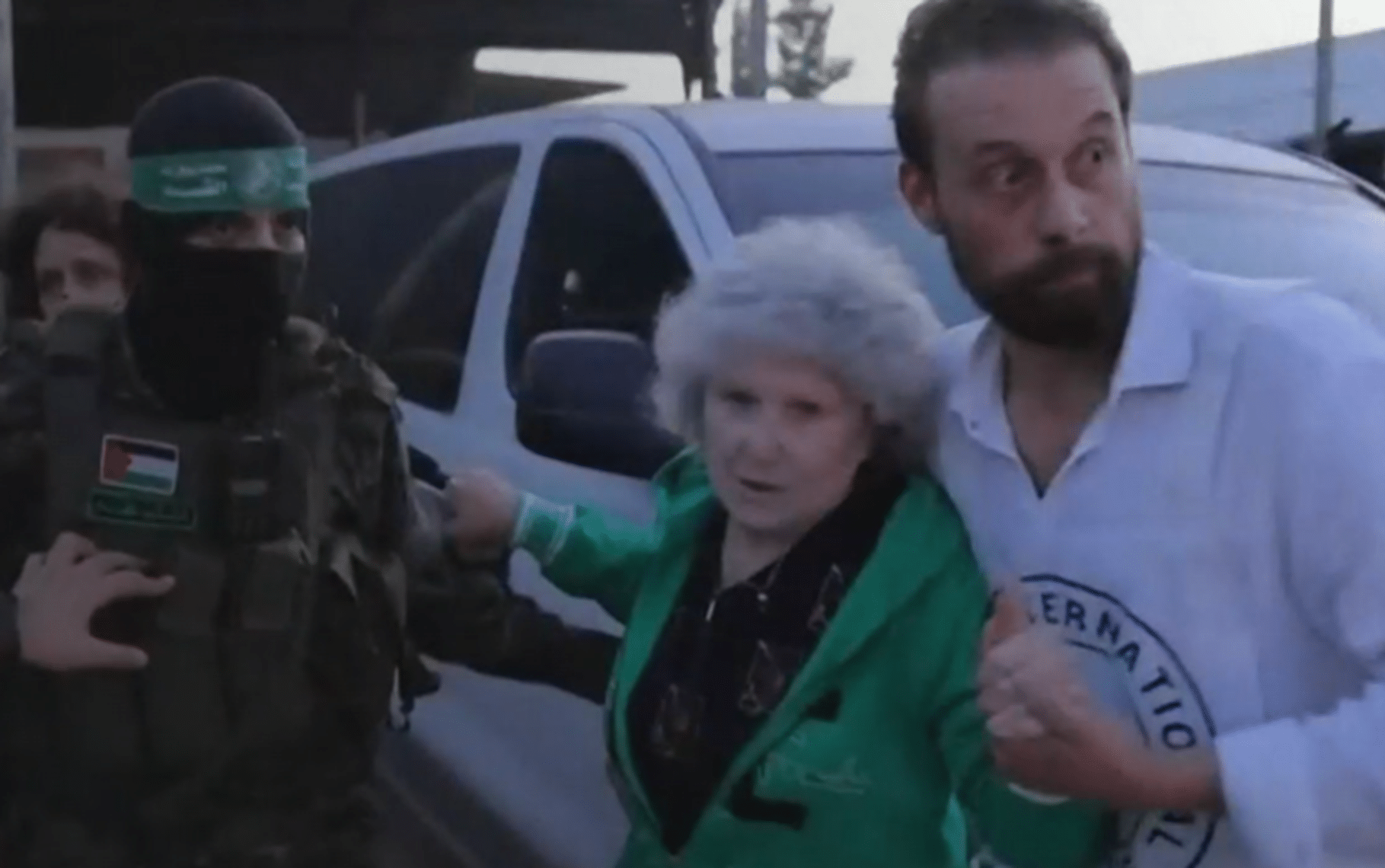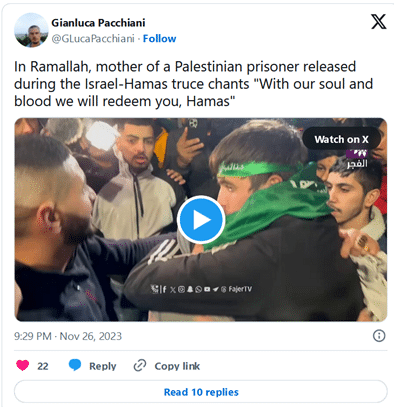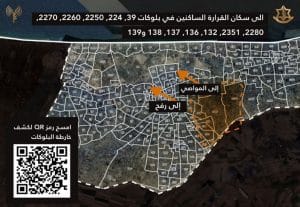Account of the main events in the Israel-Hamas war and hostilities by the Iranian Axis

Overview
- During this week, fighting resumed following the collapse of the ‘hostage deal’ after the successful release of 110 hostages, leaving 138 in captivity. The IDF began cracking down on the remaining neighborhoods of the northern part of the Gaza Strip, in particular the Gaza City neighborhoods of Sajaei’a and Jabaliye, as well as Beit Hanoun and other parts. In addition, an intensified maneuver has been taking place in the southern part of Gaza as well. The estimate is that the senior Hamas leadership in Gaza has fled to around Khan Younes in the southern Gaza Strip.
- Israeli Air Force bombardments have successfully cleared multiple terrorist infrastructure, and the combined brigades composed of engineer corps, artillery, infantry and elite units have been scanning neighborhoods, sensitive sites such as civilian facilities (playgrounds, schools, UN facilities, mosques, hospitals) and have led to the securing of invaluable intelligence that will impact the planning of the fighting.

- In Lebanon, Hezbollah continued to launch attacks after the hostage deal collapsed. Hezbollah launched missiles towards the city of Kiryat Shmona which were intercepted by Iron Dome. IDF retaliated and shot artillery fire to the source of the attack. IAF continued attacking Hezbollah compounds inside Lebanon.
- Nabih Berri, the speaker of the Lebanese Parliament, met with French envoy Jean-Yves Le Drian to discuss changes to UN Resolution 1701 and to identify a formula that will prevent Hezbollah from violating it. Berri opposes changes to 1701 and claims that Israel is in constant violation of the Resolution. In reality, it is Hezbollah that has been flagrantly violating 1701 through its unchecked activity south of the Litani River and along the Israel-Lebanon border, attacking UNIFIL forces and initiating dozens of attacks toward Israeli territory, often killing and injuring Israelis. It is also violating UN resolutions 1559 and 1680 which establish that no other armed forces are allowed to operate in Lebanon other than the Lebanese military, which Hezbollah routinely ignores by continuing to operate independently.
- The British Secretary of State for Defence announced that the UK had decided to move the destroyer HMS Diamond to the Persian Gulf amid fears that attacks by Iran’s proxies would intensify. This is meant to send a clear message to Iran and its proxies not to intervene, and help ensure freedom of navigation and free flow of trade in the region.
- The Houthis have escalated their campaign of terror in the Bab el Mandeb straits- USS Carney ship had intercepted an Iranian made drone launched in the southern Red Sea. In response, the foreign ministers of the G7 countries released a statement calling on the Houthis to stop threatening international shipping routes.
- A survey conducted by the Institute for Strategic Studies at the University of Jordan showed that two-thirds of Jordan’s residents strongly support “Hamas’ surprise attack on Israel on October 7,” and only 8% do not. According to the survey, conducted among a sample of 1,200 residents, 86% of Jordanians are dissatisfied with the position of Western countries towards the war.
- Foreign Ministers of UN Security Council members convened to discuss the situation in Gaza. For the first time Secretary General Guterres made a speech mentioning the sexual violence perpetrated by Hamas on October 7th and said that it needs to be investigated, while failing to condemn the acts or Hamas itself. That stands in sharp contrast to Guterres directly accusing Israel of committing “clear violations” of international law prior to any investigation.
- Palestinian President Abbas and PM Shtayyeh met with Karim Khan, prosecutor general of the International Criminal Court (ICC). Abbas called for speeding up the ICC’s investigations and bringing the “Israeli war criminals” to justice.
Gaza Strip
Hostage Negotiations
After an initial agreement of a temporary ceasefire was extended to a total of 7 days, Hamas violated the agreement resulting in the premature resumption of fighting. On the last day of the cease-fire only 8 hostages were released as opposed to the agreement of the release of 10 hostages for every day of temporary truce. Moreover, on the last day of the deal, which was to include the bodies of three murdered hostages, were not delivered.
Negotiations for continuing the truce until December 3rd, a date that the Americans were keen on pushing, were halted after Hamas violated the terms of the agreement.

Hamas’ violations included:
- Launching attacks in Gaza, including 3 IEDS in 2 separate instances
- Refusing to release the remaining women and children
- Refusing to hand in a list of hostages in the one day before the last day of the truce
- Hamas terrorists from East Jerusalem carried out a terrorist attack in Jerusalem which claimed the lives of 3 Israelis and praised it as an act of resistance (another one was killed by gunfire after being mistaken for a terrorist)
- Hamas launched 50 missiles to Israel, to the city of Ashdod and other surrounding cities on Friday morning (December 1st)
Throughout the implementation of the agreement Hamas engaged in cynical psychological warfare, toying with the Israeli public:
- Delayed delivering the lists of hostages claiming that they did not know the locations of the hostages
- Delayed releasing the hostages during several rounds. On the second day, the hostages were released just 2 minutes before midnight, the deadline Israel had set for returning to military activities
- They claimed that the entire Bibas family was killed by Israeli bombardment and then released a video of the family’s father pleading with the Israeli government to reach a ceasefire after his family members were killed
- They separated members of families which violated the agreement
- They almost pulled out of the deal altogether after erroneously claiming that Israel had violated the agreement- for instance, they insisted that the Palestinian terrorists who had committed the most severe crimes should be released first
- They refused to allow the Red Cross to visit the remaining hostages and provide them with life-saving medications, in contravention of the agreement
Out of the 247 hostages, 112 were released during the hostage deal. 80 were Israelis and the rest were foreigners, mainly Thai nationals who were released as a part of a separate agreement between Bangkok and Tehran. There were 3 Russian nationals who were released as a Hamas gesture to the Kremlin and were not included in the initial deal, and some dual nationals.
There are still 135 hostages, 130 Israelis and 11 with foreign nationalities in Hamas captivity- 116 Men and 19 women. When the truce broke down on Friday December 1st, the fighting resumed.

IDF activity-Post Truce
IDF troops found mid-range grad missiles in UNRWA facilities and other weapons in civilian UN facilities.
One striking example is an UNRWA tag found on a terrorist’s vest.
The IDF informed Gaza civilians to evacuate from their current locations into safe zones in the Gaza Strip by dropping leaflets in Arabic with instructions on where to access safe locations.
On Saturday, December 2nd, the IDF attacked over 400 targets including in the southern stronghold of Khan Younis ahead of the upcoming military incursions. The targets included-tunnel openings, weapons factories, weapon storage facilities, and additional terrorist infrastructure.
The IDF destroyed the Abdullah Azzam Mosque which was used as a terror base. The Mosque is symbolic given Azzam’s influence on Salafist Jihadi organizations like Hamas and Al Qaeda (mentoring Bin Laden) and his status in Palestinian society.
Lebanon
- Hezbollah broke the ceasefire by launching anti-tank missiles on December 1st, after having independently conformed to the cease-fire despite not being part of the Israel-Hamas agreement.
- Hezbollah claimed responsibility for 17 attacks, six on December 1 and 11 on December 2, 2023
- Israel retaliated with airstrikes killing Hezbollah forces and targeting the source of firing with artillery
- Reportedly, Hezbollah counted over 100 dead operatives
- Hezbollah has claimed thus far responsibility for 5 attacks on IDF posts
- Throughout the ceasefire the Northern border remained quiet. Hezbollah reported that Lebanese living near the border were compensated for damages they incurred.
- Ibrahim Aqil, head of Hezbollah operations, and head commander of Hezbollah’s attacks since the beginning of Operation Iron Swords, including the elite Radwan commando force, was killed. He was wanted by the United States for his involvement in attacks on Americans in Lebanon. There was a reward of $7 million for information about him.
Judea and Samaria
- Hamas has been attempting to incite violence throughout Judea and Samaria, calling for attacks on Israelis, with the understanding that warfare on multiple fronts would dilute Israel’s focus on fighting in Gaza.
- Since October 7, Israeli forces have arrested over 2,100 Palestinians throughout Judea and Samaria, including 1,100 Hamas members. These counter-terrorism operations have proven invaluable in thwarting deadly terrorist attacks.
- On Monday, November 27th 30 operatives were detained and their weapons were confiscated
- IDF continued its incursion into Jenin- it destroyed a weapon shaft and detained 10 suspects. The IDF entered the refugee camp by utilizing the so-called “pressure cooker” protocol to detain operatives. The IDF uncovered routes that were used to hide IEDs.
- On Thursday, the IDF carried a counterterrorism operation against nonaffiliated groups – it detained 23 operatives and confiscated 250,000 NIS of terrorist funds in cash
- Most of the released Palestinian terrorists who were released during the hostage deal with Hamas are from Judea and Samaria villages. They were greeted with excitement and received a hero’s welcome with Hamas flags.
- On Thursday, two Hamas terrorists carried out a shooting attack in Jerusalem killing 3 civilians. One more civilian, who intervened and targeted the terrorist with his personal firearm, was accidentally killed by one of the soldiers after being mistaken for one of the terrorists. The two terrorists were affiliated with Hamas, encouraged by the organization’s call for attacks around Israel despite the cease-fire, and had served terms in Israeli prison for attacks against Israelis. Their houses were sealed the same day. PIJ spokesperson claimed that Jerusalem will stay a battle ground for all their attacks. Hamas praised the attack.
Syria and Iraq
- Israel bombed the Damascus international airport a day after it resumed its operations according to local sources
- Iran has reportedly ordered 70 SU-35 Russian fighter jets and an additional 29 MIGs are being upgraded in Iran
- 2 IRGC operatives were killed in Damascus, according to Syrian media
- A failed rocket was launched at Israel from Syria, IDF forces attacked the sources of the rocket fire with artillery
- Islamic Resistance in Iraq claimed responsibility for an attack on an American base earlier in the month. According to the announcement, this was a response to the “crimes” committed by Israel
- 94 attacks were carried out by pro-Iranian militias against US bases in Syria and in Iraq in November, 64 in Iraq and 30 in Syria. The US has fallen short of retaliating…and has only attacked these militias twice in November.
Yemen
- The Houthis have increased their piracy efforts targeting Israeli-owned ships. The Houthis are threatening the freedom of movement around the Bab el Mandeb straits, which are the choke point connecting trade routes via the Suez Canal. This is one of the gravest threats on Israeli and American passage routes since the 1967 war.
- Securing global trade routes is considered a key pillar in global security, and so the Houthis’ attempt to control the Bab El Mandeb straits poses a threat to global trade. Israel’s Zim and Denmark’s Maersk, the countries’ largest shipping companies have already rerouted some ships to travel all around Africa to bypass the Houthis. Egypt’s crumbling economy owes 2% of its GDP to the fees collected from ships passing through the Suez Canal.
- This rerouting of goods cripples the global economy and makes supply chains more expensive. This has the potential to completely destabilize an already fractured Egypt. The Suez Canal is responsible for 12% of global trade, 5% of global crude oil, 10% of LNG. 30% of the world’s cargo ships use this route.
- The Houthis have thus far attempted to target Israeli-owned ships in 3 different incidents- one ship owned by Israeli Businessman Rami” Ungar and two others owned by Israeli mogul Eyal Ofer. The latter attack was confirmed to by a piracy effort that US intelligence suggested was coordinated with the Houthis.
- On Sunday December 3rd, the Houthis attacked vessels registered in 14 different countries using Iranian drones and missiles.
- The destroyer USS Carney intercepted an Iranian-made KAS-04 UAV in the southern Red Sea launched by the Houthis
- Muhammad al-Bakhiti, a member of the Houthi political bureau, said that the Houthis were in a state of open war with “the Zionist entity and promised more attacks in the future.
- Mo’az Abu Shamala, the Hamas representative in Yemen, said the “partnership” with Houthis would “confuse and distract” Israel and contribute to reducing the pressure on the Gaza Strip. This case further compounds the multi-front character of the Israel-Gaza conflict, by having Hamas officials participating in attempts to deflect Israel’s attention from the Gaza front by cooperating with another Iranian proxy, the Houthis.
- An attempted attack in the Red Sea was thwarted and the circumstances of the incident were being investigated (Ynet, December 3, 2023). The British Army announced that it had received an update on the activity of a drone in the Bab al-Mandeb area, that caused an explosion.
